#magazine: motion picture herald
Text

Horror of Dracula (1958) & The Thing That Couldn't Die (1958)
from Motion Picture Herald Magazine, January 1958.
#horror of dracula#dracula 1958#hammer horror#the thing that couldn't die#double feature#motion picture herald magazine#vintage movie ads#1950s movies#horror
102 notes
·
View notes
Text

Motion Picture Herald, January 2, 1932.
#marlene dietrich#otto dyar#shanghai express 1932#1930s#motion picture herald#old hollywood#old movies#old magazines#old movie stars#old hollywood glamour#classic hollywood#old hollywood actress#1930s cinema#1930s hollywood#1930s fashion#1930s style#30s#30s movies#30s fashion#30s style#vintage fashion#vintage style
37 notes
·
View notes
Note
hey!! i am genuinely curious about how the catholic church helped implement the hays code, would you be able to tell me more/do you have any good reading material about it? thanks so much!!
This has been sitting in my inbox for aaaaaages, because I want to do it justice! It's actually a big facet of my research project that I'm going to go into much, much, much more depth on, but here's the short(er) summary:
The foundational text of the Hays Code was written by two Catholics: a Jesuit priest named Father Daniel Lord, and a man named Martin Quigley, who was the editor of the Motion Picture Herald. They grounded their guidelines in Catholic morality and values, based on the idea that art could be a vehicle for evil by negatively influencing the actions of those who view it.
The original list of guidelines written by Lord and Quigley was adapted into the Production Code, popularly known as the "Hays Code" after William Hays, the president of the Production Code Administration that enforced it. As president of the PCA, William Hays appointed a staunch Catholic man called Joseph Breen to enforce the code. Breen enforced it aggressively, confiscating the original reels of films he deemed inappropriate and against the Code. Many lost films from this era are only "lost" because Joseph Breen personally had them destroyed. Some were rediscovered later, but many were completely purged from existence.
When Breen died in 1965, Variety magazine wrote, "More than any single individual, he shaped the moral stature of the American moral picture." He was a very, very big deal, and was directly responsible for censoring more films than I could even begin to list here.
In 1937, Olga J. Martin, Joseph Breen’s secretary, said, “To an impoverished country which had become religious and serious-minded, the sex attitudes of the post-war period became grotesquely unreal and antedated. The public at large wanted to forget its own derelictions of the ‘gay twenties.' The stage was set for the moral crusade.”
In 1936, once the Code was being fully enforced on filmmakers by Joseph Breen, a letter was issued by the office of Pope Pius XI that praised Breen's work, and encouraged all good Catholics to support film censorship.
The letter read in part, "From time to time, the Bishops will do well to recall to the motion picture industry that, amid the cares of their pastoral ministry, they are under obligation to interest themselves in every form of decent and healthy recreation because they are responsible before God for the moral welfare of their people even during their time of leisure. Their sacred calling constrains them to proclaim clearly and openly that unhealthy and impure entertainment destroys the moral fibre of a nation. They will likewise remind the motion picture industry that the demands which they make regard not only the Catholics but all who patronize the cinema."
Basically, this letter was a reminder from the Papal authority that bishops and priests are supposed to stop people from engaging with "lewd" or "obscene" art. That meant supporting things like the Hays Code.
So, to summarize: the original text of the Hays Code was written by two Catholics, including a priest. The biggest and most aggressive censor under the Code was a Catholic man, who had the full support and approval of the Pope at the time. Good Catholics were called en-masse to support the Hays Code, because it was intentionally written to line up with Catholic teachings.
There's a lot more to say on the subject, and if you're interested in reading more on your own, I recommend the book "Pre-Code Hollywood: Sex, Immorality, and Insurrection in American Cinema, 1930-1934," by Thomas Doherty. There are plenty other sources I can recommend on request, but that's a solid place to start.
(And if I can toot my own horn, I'm intending to do a video lecture series all about American film censorship and the Hays Code. Pledging to my Patreon helps keep me fed and housed while I do all this damn research.)
1K notes
·
View notes
Text
Lost, but Not Forgotten: A Doll's House (1922)

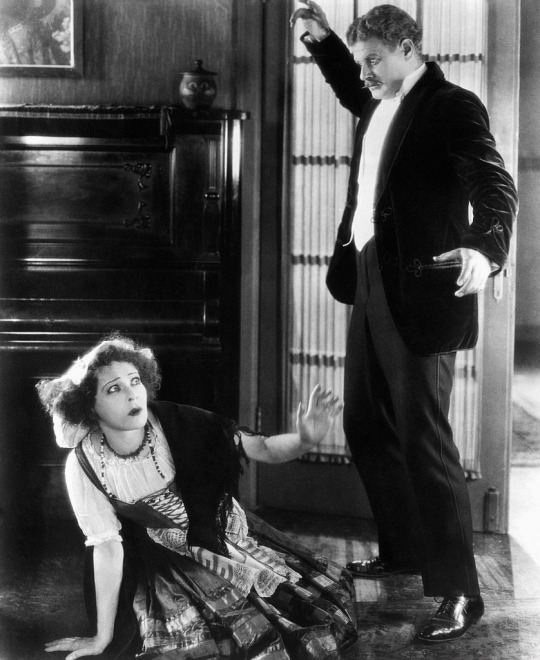
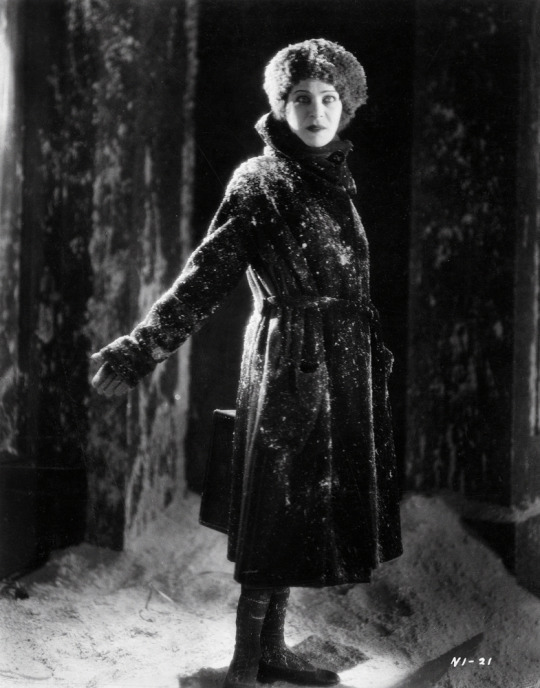


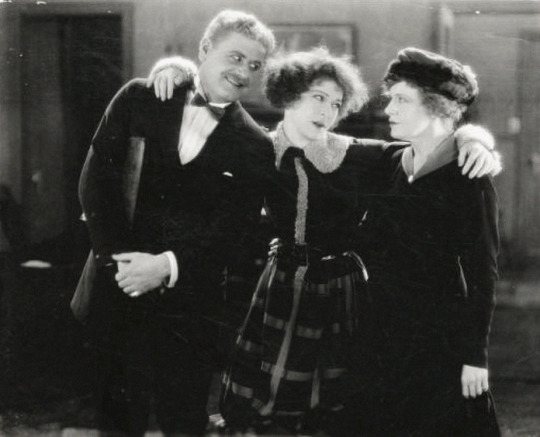
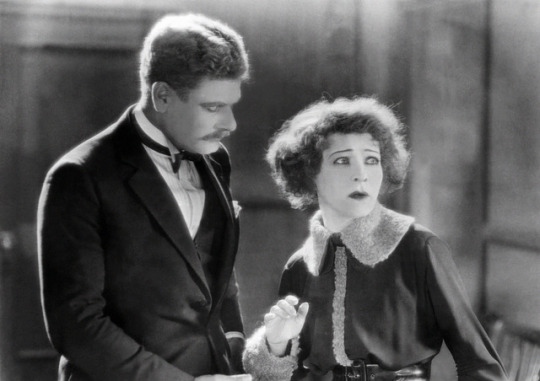
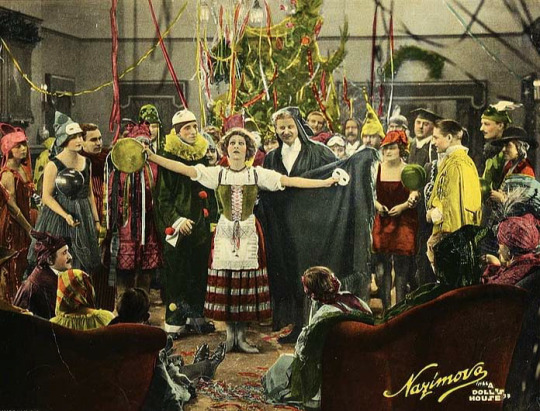

Direction: Charles Bryant; assisted by Albert Kelley
Scenario: Peter M. Winters (pen name of Nazimova)
Original Play: Henrik Ibsen
Camera: Charles Van Enger & Neal Jack (2nd camera); assisted by Paul Ivano & Lewis Wilson
Cutting: Lou Ostrow; assisted by Samuel Zimbalist
Wardrobe: Lilliam Turner
Studio: Nazimova Productions (production) & United Artists (distribution)
Performers: Nazimova, Alan Hale, Wedgewood Nowell, Nigel De Brulier, Florence Fisher, Clara Lee, Philippe de Lacy, Barbara Maier, Elinor Oliver
Premiere: Opening week: February 11-18, Strand Theatre, 1579 Broadway, Manhattan, NY and the Strand Brooklyn Theatre, 647 Brooklyn, NY.
Status: presumed entirely lost
Length: 7 reels or roughly 77 minutes
Synopsis (synthesized from magazine summaries of the plot)
In a comfortable flat, Nora Helmer (Nazimova) keeps house for her husband, Torvald (Hale), and their three children. Nora works hard to keep Torvald happy by playing the role of his “little squirrel.”

from Moving Picture World, 18 February 1922
Things were not always so comfortable for the Helmers, however. Three years prior, Torvald was gravely ill and the doctor ordered special treatment and a trip south to save his life. Nora secretly approached a money-lender, Krogstad (Nowell), to pay for Torvald’s treatment and forged her now-deceased father’s signature on a bond. In the intervening years, Nora has scrimped, saved, and taken in extra work to pay off the loan—still keeping the secret from her “principled” husband, who doesn’t approve of money-lenders.
Now, Torvald has fully recovered his health and Nora is one payment away from paying the loan in full. Torvald gets promoted to an official position at the bank and Krogstad now works under him. Upon learning that Krogstad has an unsavory past, Torvald decides to fire him—planning on offering his position to Nora’s childhood friend, Mrs. Linden (Fisher), who is now a single mother in need.

from Exhibitors Herald, 28 January 1922
Krogstad reveals to Nora that he knows she forged her father’s signature and that he will expose her to her husband if she doesn’t get Torvald to reinstate him at the bank.
Nora desperately tries to keep a cheerful, playful demeanor with Torvald. When Torvald sermonizes to her about moral turpitude due to bad mothers, she panics and feels her downfall is imminent.
Nora determines that she may be able to pay Krogstad off, and asks a family friend, Dr. Rank (De Brulier), for a loan. Unexpectedly, Rank takes this moment to confess his feelings for Nora. Nora rebuffs him, but now feels as though she has nowhere to turn.
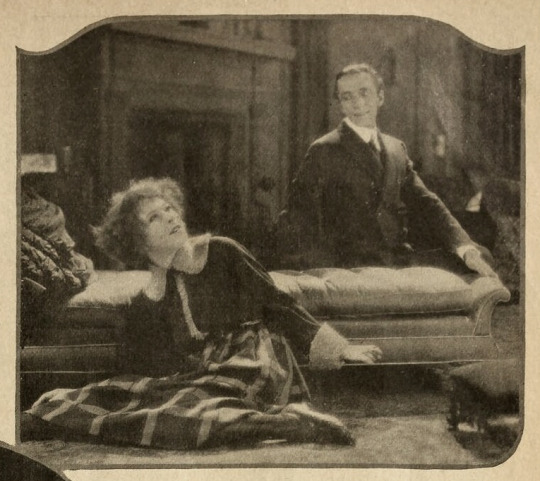
from Motion Picture Magazine, May 1922
On Christmas Eve, Nora knows that there is a letter from Krogstad in their post box, but only Torvald has a key. Nora frantically distracts him from opening the box before they leave for a holiday masquerade party. Torvald notices Nora’s frenetic energy in how she dances at the party, but doesn’t know the cause.
When they return home, Torvald retrieves the mail. Before he can open the letter from Krogstad, Nora confesses that she deceived him to save his life. Torvald is furious that Nora has endangered his reputation and questions if she is fit to be a mother while in the same breath stating that he will pay Krogstad off.
However, when Torvald opens the letter, his mood turns on a dime. Krogstad has had a change of heart due to the influence of Mrs. Linden, who also happens to be an old sweetheart of Krogstad’s. The letter contains the cancelled note. Torvald grabs Nora and dances her around the room, overjoyed that his reputation is no longer in danger.
Nora realizes all of her acrobatics (literal and metaphorical) to keep Torvald happy have been pointless. She has sacrificed so much of her energy and independence to merely become “a toy of a selfish man.” The mask has fallen. While Torvald is ready to pretend that nothing has changed, Nora knows that she cannot go back to being his doll. Nora packs up her belongings and leaves the flat—intent on becoming her own person.
Final title card: “The End, or, Rather the Beginning.”
---
Points of Interest:
A Doll’s House (1922) was Nazimova’s first independently produced film after her contract with Metro ended.
Some of Nazimova’s first roles on the American stage were Ibsen plays (“Hedda Gabler,” “A Doll’s House,” & “The Master Builder,” to be specific), so this film was an attempt to capture some of that work on film.
Only 8 out of Nazimova’s 18 silent films survive today and only 3 have been made available on home video or streaming. [I recently re-watched Salome (1922) on the Pioneers: First Women Filmmakers set and I can’t recommend picking up this set enough!]
All Nazimova Silents:
“War Brides” (1916, presumed lost)
“Revelation” (1918, extant at MGM)
“Toys of Fate” (1918, extant at Národní filmový archiv)
“A Woman of France” (1918, short, presumed lost)
“Eye for Eye” (1918, extant at Gosfilmofond)
“Out of the Fog” (1919, presumed lost)
“The Red Lantern” (1919, extant at Cinémathèque Royale de Belgique, Gosfilmofond)
“The Brat” (1919, presumed lost)
“Stronger than Death” (1920, extant at MGM & Eastman House)
“Heart of a Child” (1920, presumed lost*)
“Madame Peacock” (1920, extant at Cinémathèque Royale de Belgique)
“Billions” (1920, presumed lost)
“Camille” (1921, extant)
“A Doll’s House” (1922, presumed lost)
“Salome” (1922, extant)
“Madonna of the Streets” (1924, presumed lost)
“The Redeeming Sin” (1925, presumed lost)
“My Son” (1925, presumed lost)
*The Women Film Pioneers Project website has this film listed as extant at Cinémathèque Royale de Belgique, but LOC lists it having no known archival holdings.
[Survival status checked via LOC’s Silent Feature Film Database, and re-checked at relevant archives when available]
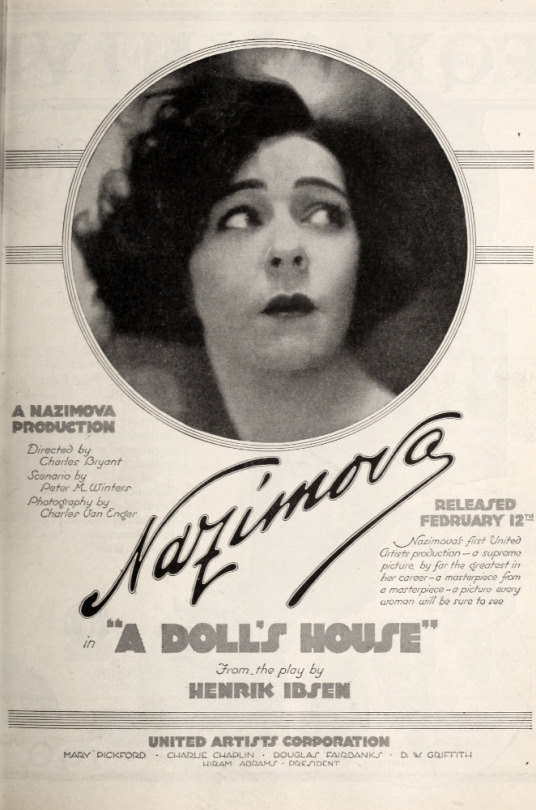
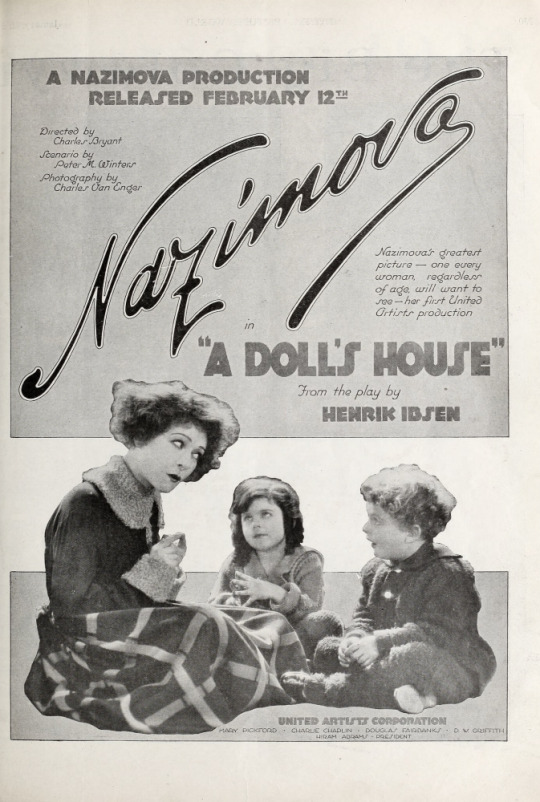


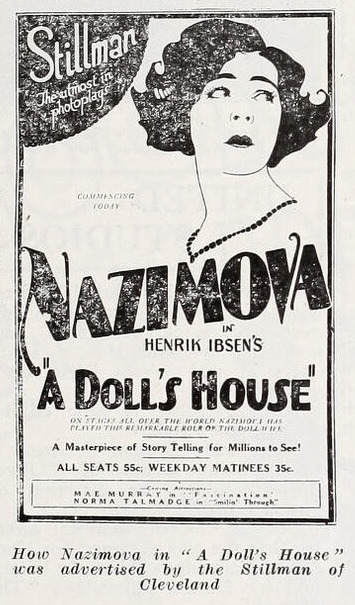
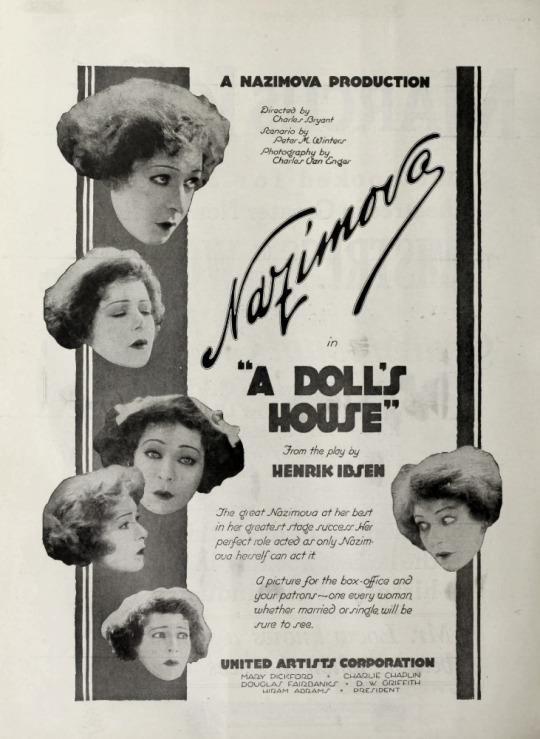
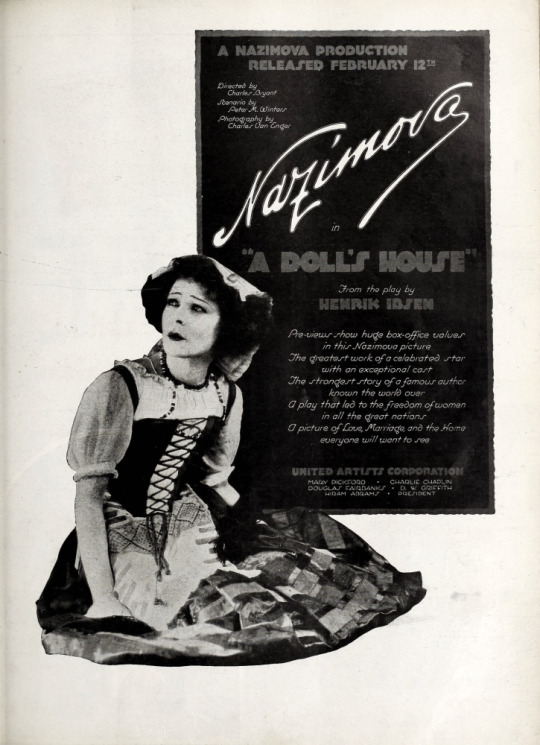

Transcribed Sources & Annotation over on the WMM Blog!
Buy me a coffee!
#Nazimova#Alla Nazimova#henrik ibsen#1920s#1922#silent era#silent movies#silent film#american film#independent film#charles bryant#a doll's house#film#movies#classic film#classic movies#film history#lost but not forgotten#lost film
33 notes
·
View notes
Photo

(vía DECAYING HOLLYWOOD MANSIONS: Advertising Spread for 1936/37 Releases from British Gaumont Picture Corporation, Motion Picture Herald Magazine, 1936)
5 notes
·
View notes
Text
Filming of the barricades sequence for Les Misérables (1917) and the 71st New York Infantry Regiment
The Fox Studio's production of Les Miserables staring William Farnum premiered in December 1917. They must have filmed things very quickly in those days because in October 1917 they were still filming the barricades sequence! October 20th The Exhibitor's Herald (a trade magazine of the film industry) reported:
In order to secure men with military training to represent the French guard in the filming of the Willian Fox spectacle, "Les Miserables," at Fort Lee, NJ recently, a battalion of soldiers from the 71st regiment, encamped at Van Cortlandt Park, New York, was borrowed for the occasion.
While most of the 71st regiment men were in French uniforms, others which did not necessitate their appearance before the camera were detailed to other work, and during a lull in picture taking these men in khaki conceived the happy idea of having their pictures taken in the "Paris" street, where they expected shortly to be seen in reality. Cameras were produced and snapshots taken of the soldiers sitting at Parisian cafe tables, under awnings and before signs in French.
Remember the bolded part for later.
Here is an image of the insurgents defending the barricade:
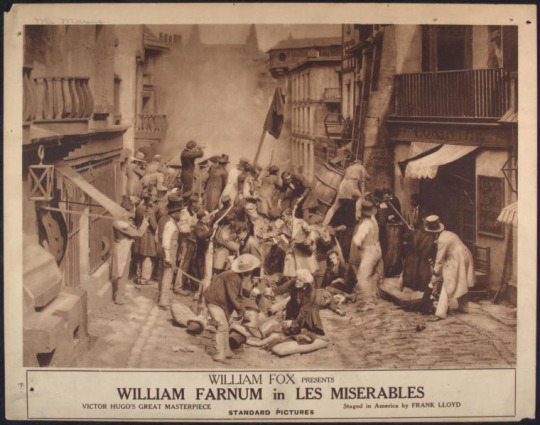
And here's an image of the barricade overrun by National Guardsmen, published in January 1918 in Photoplay Magazine:
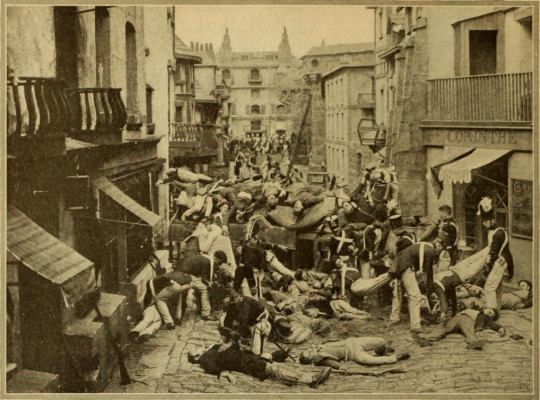
On the left is the Corinthe cafe. Lots of promotion for this movie focused on the accuracy of this set, especially the cobblestone streets. For example, the October 1917 edition of the Motion Picture News said this:
One frenzied guest [a reporter visiting the set] exclaimed, "So this is Paris!" as he stubbed a toe on a protruding cobblestone of the Rue de Something or Something Else, a street the pavement of which bore a close resemblance to the surfaces of Broadway and Seventh avenue in their present state of construction. [. . .] There were a number of cafes with tables out in front. Seated around them were all the gentry of the Paris, but they never drank the brownish stuff in their glasses. We asked one fellow why, and his reply was "ginger ale."
The December issue of The Moving Picture World, reported that "Nine city blocks were built at a cost of $50,000, and so perfectly was it all reproduced that French military officers visiting New York have insisted that it was not a reproduction at all but Paris itself" and that there were 1,000 extras in the role of the people of Paris, in addition to the soldiers.
Groups of uniformed soldiers rode here and there, stunning figures in their Guard uniforms of red and blue and white, and while to them it was mimic and in a measure miniature warfare, it also was in the nature of rehearsal for sterner tasks.
And here are all the extras from the 71st regiment, with Willian Farnum in the middle:

After the Sammies had garbed themselves in the fashion of National Guardsmen of old France, it may have been "Les Miserables" they were playing in, but there was nothing miserable about the way they flung themselves about the fight on the barricade in the streets of this transplanted Paris.
The caption from Photoplay magazine also tells us that the 71st were heading to France via Fort Wadsworth South Carolina and that they took this job to make some tobacco money. Here's a photo of a member of the 71st leaving for Fort Wadsworth:
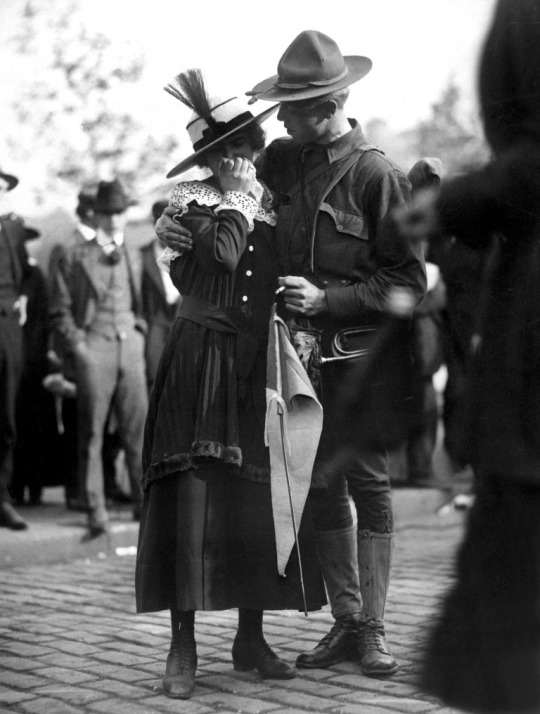
The October 1917 edition of the Motography (which stated that the film depicted the July Revolution) said that the regiment had gone to Fort Wadsworth and added this additional information about filming:
They worked from nine o'clock one morning until two p.m. the following day. Just a half hour before quitting time came the climax. Right over the top of a twelve-foot barricade they went as hard as and as fast as they could go.
While, of course, the whole affair was mimic warfare and the soldiers were not for the moment clad in the khaki of their country, that battalion from the 71st went other the top as though the Boche were on the other side and they were determined to "get" him.
After the cameras had ceased to grind, the men were drawn up and Captain Schroeder of Company A, of the 71st, made a speech. He thanked Mr. Lloyd [the movie's director] and Mr. Farnum in behalf of his men for the royal treatment they had received and especially for affording them the opportunity of going over the top.
"Over the top" is in reference to the trench warfare of WWI.
But remember how in the first article it was mentioned that soldiers took photos on set? Well that led to this article in The Laurens Advertiser, 4 September 1918:

Government Officials have at last traced down the origin of the sensational reports that the famous Seventy-first Regiment of New York had been sent "Over There" last August, when as a matter of fact it was still in the United States.
The rumor was a most persistent one and many newspapers and magazines actually printed pictures of members of this regiment taken in Paris. It all happened in this way:
William Fox, the motion picture producer, was engaged in making a photodrama of Victor Hugo's greatest work, Les Miserables, with William Farnum playing the part of the immortal "Jean Valjean."
A section of Victor Hugo's Paris was built "somewhere in New Jersey," and to show the troops fighting in the streets of Paris against the revolutionists, a battalion or two of the Seventy-first regiment was used. While the soldiers were waiting to make the scenes in which they appeared, someone produced kodaks and began making snap-shots of each other.
The soldiers were "over there" in New Jersey several days and many pictures were taken with the streets of Paris as the background. The members of the Seventy-first quickly realized the foreign look and sent copies to friends and sweethearts.
The sweethearts and friends sent these to magazines and newspapers as proof positive that the Seventy-first was actually in Paris and in this way the rumor started.
A magnificent picturization of Les Miserables, produced by William Fox with William Farnum playing the part of the immortal Jean Valjean will be shown at the Opera House Thursday September 5th. Les Miserables comes direct from the eight weeks run at the Lyric Theatre, New York City.
So is it true? Or is that article just an advertisement for the showing for the film? Only semi-related but here is an advertisement for a Kodak camera printed in a movie magazine and featuring soldiers writing home:

I would love to find one of those photographs of the soldiers on set (since it says that they were sent to newspapers and magazines) or even to find an example of an erroneous report of the 71st being sent abroad. I haven't had much luck so far but maybe I will come back to it later or if I put this out there maybe someone else will find something.
16 notes
·
View notes
Text
@adventurecalled continued from X
There's a grimness now overshadowing everything. Not even the consideration of a holiday from school could dispel such thick, nearly impenetrable, gloom. She still has time before boarding the train, so she terries at the magazine stand. There's one in particular that grabs her attention. The Macready had organized a shoot at the professor's place, boasting of his considerable antiquated holdings and showcasing his more famous collections.
Cerulean eyes practically devour the words with voracious appetite. She can NOT help but search EVERY picture intently. Had anyone else discovered their beloved LAND? And as Susan turns the next page, a raucous NOISE startles her. It's a blaring blast of a car horn warning some bubbleheaded jaywalker to be more attentive. It heralds a brief and rather annoyed glance before her gaze returns to the article.
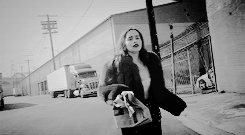
There, ushered upon the next whirling, rain-drenched breeze is a FAMILIAR timbre. One, she almost believed that she had IMAGINED. "Caspian?" The name escapes quivering lips hushed, in the form of a prayer. The paper she had been reading, from the news stand is promptly discarded and she blinds, dispelling every ounce of disbelief from her form.

As if her utterance had summoned him, the way her horn had brought the Pevensie children back to Narnia, he appears on the steps below her. What fortune had rendered him present? Was she awake? Or dreaming?
The first few inches forwards are tread with caution and a glance is spared towards all the onlookers. Onlookers who, were seeing his manifestation TOO. Therefore, he MUST be every bit as REAL as she is.
The pronouncement of Narnia's peril propels her out of a state of shock and into motion. Her suitcase is abandoned beside an overeager want-to-be suitor. One who she told, her name was Phyllis. The stairs are hastily descended two so that she may reach his side in less than a breath of time.
Not wishing for the onlookers to believe she is quite mad, for Narnia to them, did NOT exist, Susan threw her arms around him in reckless abandon. "Caspian, I've missed you!!!" Careful fingers thread through his glorious crown of dark-hair. It is HIM. He was every bit as WONDERFUL as she remembered. The affectionate embrace is but a cover to shield him from harsh Londoner's scrutiny.
Then, without missing more than a few heartbeats, she begins to ask questions. "How--? How did you get here? How did you even find me?" Those topped her list, promptly followed by, "what is it? What has happened to Narnia?"
#adventurecalled#muse: susan pevensie#Susan x Caspian: you might need to call me again#Susan x Caspian: whatever may come your heart I will choose
4 notes
·
View notes
Text
List of Scottish Inventions;
- The pedal bicycle
- Europe’s first passenger steamboat
- The telephone
- The motion picture camera (Kinetoscope)
- The first edition of the Encyclopaedia Britannica
- The first English textbook on surgery (1597).
- Logarithms (John Napier)
- Hypnotism
- The Gregorian telescope
- Criminal fingerprinting
- Golf
- Ice Hockey
- The dugout (in soccer)
- Curling
- The hypodermic syringe
- General anaesthetic
- Insulin (the discovery of)
- Penicillin
- Oxygen therapy
- The television
- The refrigerator
- The flush toilet
- The kaleidoscope
- The lawnmower
- The electric clock
- The Bank of England (devised by William Paterson)
- Bank of France (devised by John Law)
- Colour photography
- The New York Herald
- Forbes magazine
- Irn Bru
^^^^^^^^^ Were all invented by Scottish people.
3 notes
·
View notes
Text
Sam Tallent on Publishing, Comedy, Community, Doug Stanhope, Vegas, Reading, Self-Education, Writing, Weed, and Panic Attacks
In today's flashback, an outtake from Episode 708, my conversation with author and comedian Sam Tallent. It first aired on May 26, 2021.
Tallent is a comedian, novelist and host of the Chubby Behemoth Podcast. For the last decade, he has performed more than 45 weekends per year in North America, Asia, Australia and Europe. His writing has appeared in Birdy Magazine and on VICE.com and he’s told jokes on Comedy Central, TruTV and VICELAND.
His acclaimed debut novel, Running the Light, heralded as the definitive book on standup comedy, is soon to be a major motion picture (Doug Stanhope: “the best fictional representation of comedy in any medium ever,” Marc Maron: “a beautiful rendering of a dark reality”). His novella, ATTABOY, was published as an Audible Original. "Waiting for Death to Claim Us," his comedy special, is available on Amazon Prime. He lives in Colorado.
***
Otherppl with Brad Listi is a weekly literary podcast featuring in-depth interviews with today's leading writers.
Available where podcasts are available: Apple Podcasts, Spotify, YouTube, etc.
Subscribe to Brad Listi’s email newsletter.
Support the show on Patreon
Merch
@otherppl
Instagram
TikTok
Email the show: letters [at] otherppl [dot] com
The podcast is a proud affiliate partner of Bookshop, working to support local, independent bookstores.
www.otherppl.com
0 notes
Text
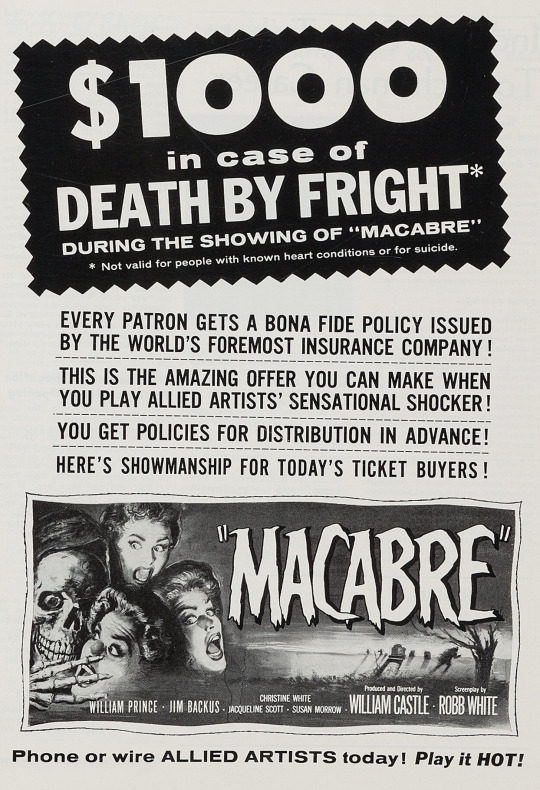
Macabre (1958)
From Motion Picture Herald Magazine, March 1, 1958.
#macabre#macabre 1958#william castle#1950s movies#1950s horror#1958#horror#motion picture herald magazine#vintage movie ads
72 notes
·
View notes
Text
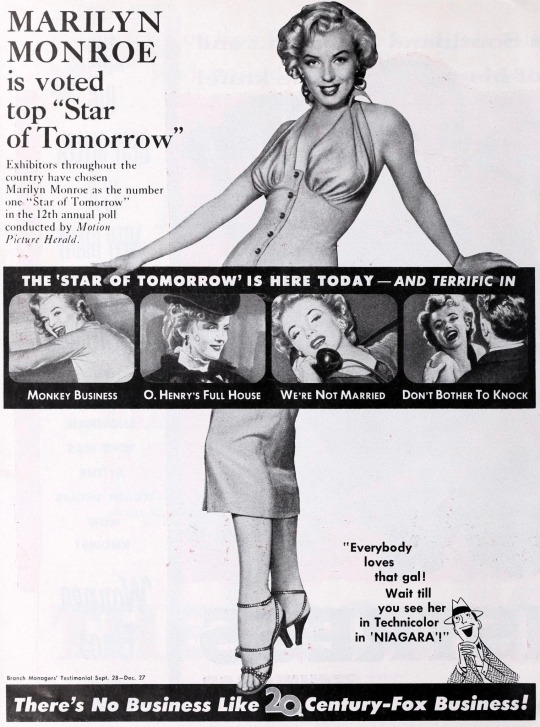
Motion Picture Herald, October 1952.
#marilyn monroe#1950s#monkey business 1952#o. henry's full house 1952#we're not married 1952#don't bother to knock 1952#motion picture herald#old hollywood#old movies#old magazines#old movie stars#classic hollywood#old hollywood glamour#old hollywood actress#vintage style#vintage fashion#old hollywood actors
14 notes
·
View notes
Video
youtube
Hubble spots ultra-speedy jet blasting from star crash Astronomers using NASA's Hubble Space Telescope have made a unique measurement that indicates a jet, plowing through space at speeds greater than 99.97% the speed of light, was propelled by the titanic collision between two neutron stars. The explosive event, named GW170817, was observed in August 2017. The blast released the energy comparable to that of a supernova explosion. It was the first combined detection of gravitational waves and gamma radiation from a binary neutron star merger. This was a major watershed in the ongoing investigation of these extraordinary collisions. The aftermath of this merger was collectively seen by 70 observatories around the globe and in space, across a broad swath of the electromagnetic spectrum in addition to the gravitational wave detection. This heralded a significant breakthrough for the emerging field of Time Domain and Multi-Messenger Astrophysics, the use of multiple "messengers" like light and gravitational waves to study the universe as it changes over time. Scientists quickly aimed Hubble at the site of the explosion just two days later. The neutron stars collapsed into a black hole whose powerful gravity began pulling material toward it. That material formed a rapidly-spinning disk that generated jets moving outward from its poles. The roaring jet smashed into and swept up material in the expanding shell of explosion debris. This included a blob of material through which a jet emerged. While the event took place in 2017, it has taken several years for scientists to come up with a way to analyze the Hubble data and data from other telescopes to paint this full picture. The Hubble observation was combined with observations from multiple National Science Foundation radio telescopes working together for very long baseline interferometry (VLBI). The radio data were taken 75 days and 230 days after the explosion. "I'm amazed that Hubble could give us such a precise measurement, which rivals the precision achieved by powerful radio VLBI telescopes spread across the globe," said Kunal P. Mooley of Caltech in Pasadena, California, lead author of a paper being published in the October 13 journal of Nature magazine. The authors used Hubble data together with data from ESA's (the European Space Agency) Gaia satellite, in addition to VLBI, to achieve extreme precision. "It took months of careful analysis of the data to make this measurement," said Jay Anderson of the Space Telescope Science Institute in Baltimore, Maryland. By combining the different observations, they were able to pinpoint the explosion site. The Hubble measurement showed the jet was moving at an apparent velocity of seven times the speed of light. The radio observations show the jet later had decelerated to an apparent speed of four times faster than the speed of light. In reality, nothing can exceed the speed of light, so this "superluminal" motion is an illusion. Because the jet is approaching Earth at nearly the speed of light, the light it emits at a later time has a shorter distance to go. In essence the jet is chasing its own light. In actuality more time has passed between the jet's emission of the light than the observer thinks. This causes the object's velocity to be overestimated – in this case seemingly exceeding the speed of light. "Our result indicates that the jet was moving at least at 99.97% the speed of light when it was launched," said Wenbin Lu of the University of California, Berkeley. The Hubble measurements, combined with the VLBI measurements, announced in 2018, greatly strengthen the long-presumed connection between neutron star mergers and short-duration gamma-ray bursts. That connection requires a fast-moving jet to emerge, which has now been measured in GW170817. This work paves the way for more precision studies of neutron star mergers, detected by the LIGO, Virgo, and KAGRA gravitational wave observatories. With a large enough sample over the coming years, relativistic jet observations might provide another line of inquiry into measuring the universe's expansion rate, associated with a number known as the Hubble constant. At present there is a discrepancy between Hubble constant values as estimated for the early universe and nearby universe – one of the biggest mysteries in astrophysics today. The differing values are based on extremely precise measurements of Type Ia supernovae by Hubble and other observatories, and Cosmic Microwave Background measurements by ESA's Planck satellite. More views of relativistic jets could add information for astronomers trying to solve the puzzle. The Hubble Space Telescope is a project of international cooperation between NASA and ESA. NASA's Goddard Space Flight Center in Greenbelt, Maryland, manages the telescope. The Space Telescope Science Institute (STScI) in Baltimore, Maryland, conducts Hubble science operations. STScI is operated for NASA by the Association of Universities for Research in Astronomy, in Washington, D.C.
0 notes
Photo
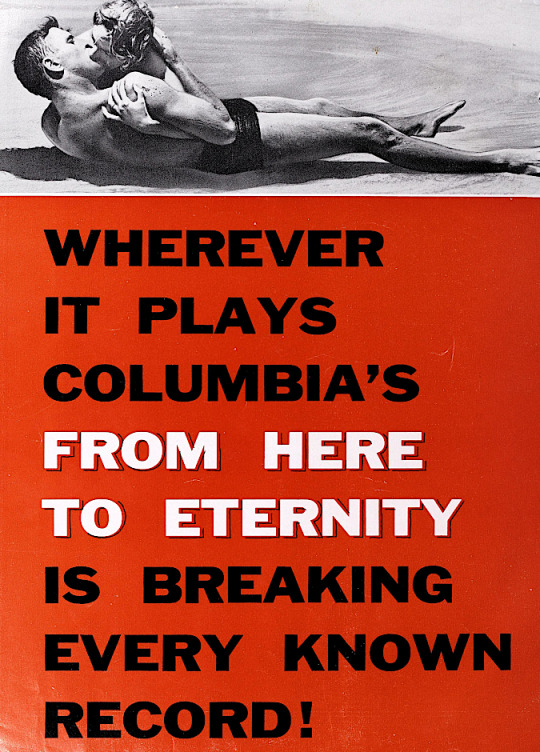
Motion Picture Herald, September 5, 1953
#burt lancaster#deborah kerr#from here to eternity#magazine: motion picture herald#year: 1953#decade: 1950s#type: advertisements#mph vol. 192 no. 10
53 notes
·
View notes
Photo

“John Newkirk, manager, Loew’s Granada, Cleveland, Ohio, placed this living model gag as the center of his advance lobby set piece on ‘Mark of the Vampire’. Gal was surrounded by cutouts of the various characters with question and answer posters on either side of the chair.” (Motion Picture Herald, July 20, 1935)
#omg!!! I love this so much aaaaa#dream job!!#mark of the vampire#magazine#motion picture herald#photography#*
129 notes
·
View notes
Text

Ida Estelle Taylor (May 20, 1894 – April 15, 1958) was an American actress, singer, model, and animal rights activist. With "dark-brown, almost black hair and brown eyes," she was regarded as one of the most beautiful silent film stars of the 1920s.
After her stage debut in 1919, Taylor began appearing in small roles in World and Vitagraph films. She achieved her first notable success with While New York Sleeps (1920), in which she played three different roles, including a "vamp." She was a contract player of Fox Film Corporation and, later, Paramount Pictures, but for the majority of her career she freelanced. She became famous and was commended by critics for her portrayals of historical women in important films: Miriam in The Ten Commandments (1923), Mary, Queen of Scots in Dorothy Vernon of Haddon Hall (1924), and Lucrezia Borgia in Don Juan (1926).
Although she made a successful transition to sound films, she retired from film acting in 1932 and decided to focus entirely on her singing career. She was also active in animal welfare before her death from cancer in 1958. She was posthumously honored in 1960 with a star on the Hollywood Walk of Fame in the motion pictures category.
Ida Estelle Taylor was born on May 20, 1894 in Wilmington, Delaware. Her father, Harry D. Taylor (born 1871), was born in Harrington, Delaware. Her mother, Ida LaBertha "Bertha" Barrett (November 29, 1874 – August 25, 1965), was born in Easton, Pennsylvania, and later worked as a freelance makeup artist. The Taylors had another daughter, Helen (May 19, 1898 – December 22, 1990), who also became an actress. According to the 1900 census, the family lived in a rented house at 805 Washington Street in Wilmington. In 1903, Ida LaBertha was granted a divorce from Harry on the ground of nonsupport; the following year, she married a cooper named Fred T. Krech.[9] Ida LaBertha's third husband was Harry J. Boylan, a vaudevillian.
Taylor was raised by her maternal grandparents, Charles Christopher Barrett and Ida Lauber Barrett. Charles Barrett ran a piano store in Wilmington, and Taylor studied piano. Her childhood ambition was to become a stage actress, but her grandparents initially disapproved of her theatrical aspirations. When she was ten years old she sang the role of "Buttercup" in a benefit performance of the opera H.M.S. Pinafore in Wilmington. She attended high school but dropped out because she refused to apologize after a troublesome classmate caused her to spill ink from her inkwell on the floor. In 1911, she married bank cashier Kenneth M. Peacock. The couple remained together for five years until Taylor decided to become an actress. She soon found work as an artists' model, posing for Howard Pyle, Harvey Dunn, Leslie Thrasher, and other painters and illustrators.
In April 1918, Taylor moved to New York City to study acting at the Sargent Dramatic School. She worked as a hat model for a wholesale millinery store to earn money for her tuition and living expenses. At Sargent Dramatic School, she wrote and performed one-act plays, studied voice inflection and diction, and was noticed by a singing teacher named Mr. Samoiloff who thought her voice was suitable for opera. Samoiloff gave Taylor singing lessons on a contingent basis and, within several months, recommended her to theatrical manager Henry Wilson Savage for a part in the musical Lady Billy. She auditioned for Savage and he offered her work as an understudy to the actress who had the second role in the musical. At the same time, playwright George V. Hobart offered her a role as a "comedy vamp" in his play Come-On, Charlie, and Taylor, who had no experience in stage musicals, preferred the non-musical role and accepted Hobart's offer.
Taylor made her Broadway stage début in George V. Hobart's Come-On, Charlie, which opened on April 8, 1919 at 48th Street Theatre in New York City. The story was about a shoe clerk who has a dream in which he inherits one million dollars and must make another million within six months. It was not a great success and closed after sixteen weeks. Taylor, the only person in the play who wore red beads, was praised by a New York City critic who wrote, "The only point of interest in the show was the girl with the red beads." During the play's run, producer Adolph Klauber saw Taylor's performance and said to the play's leading actress Aimee Lee Dennis: "You know, I think Miss Taylor should go into motion pictures. That's where her greatest future lies. Her dark eyes would screen excellently." Dennis told Taylor what Klauber said, and Taylor began looking for work in films. With the help of J. Gordon Edwards, she got a small role in the film A Broadway Saint (1919). She was hired by the Vitagraph Company for a role with Corinne Griffith in The Tower of Jewels (1920), and also played William Farnum's leading lady in The Adventurer (1920) for the Fox Film Corporation.
One of Taylor's early successes was in 1920 in Fox's While New York Sleeps with Marc McDermott. Charles Brabin directed the film, and Taylor and McDermott play three sets of characters in different time periods. This film was lost for decades, but has been recently discovered and screened at a film festival in Los Angeles. Her next film for Fox, Blind Wives (1920), was based on Edward Knoblock's play My Lady's Dress and reteamed her with director Brabin and co-star McDermott. William Fox then sent her to Fox Film's Hollywood studios to play a supporting role in a Tom Mix film. Just before she boarded the train for Hollywood, Brabin gave her some advice: "Don't think of supporting Mix in that play. Don't play in program pictures. Never play anything but specials. Mr. Fox is about to put on Monte Cristo. You should play the part of Mercedes. Concentrate on that role and when you get to Los Angeles, see that you play it."
Taylor traveled with her mother, her canary bird, and her bull terrier, Winkle. She was excited about playing Mercedes and reread Alexandre Dumas' The Count of Monte Cristo on the train. When she arrived in Hollywood, she reported to Fox Studios and introduced herself to director Emmett J. Flynn, who gave her a copy of the script, but warned her that he already had another actress in mind for the role. Flynn offered her another part in the film, but she insisted on playing Mercedes and after much conversation was cast in the role. John Gilbert played Edmond Dantès in the film, which was eventually titled Monte Cristo (1922). Taylor later said that she, "saw then that he [Gilbert] had every requisite of a splendid actor." The New York Herald critic wrote, "Miss Taylor was as effective in the revenge section of the film as she was in the first or love part of the screened play. Here is a class of face that can stand a close-up without becoming a mere speechless automaton."
Fox also cast her as Gilda Fontaine, a "vamp", in the 1922 remake of the 1915 Fox production A Fool There Was, the film that made Theda Bara a star. Robert E. Sherwood of Life magazine gave it a mixed review and observed: "Times and movies have changed materially since then [1915]. The vamp gave way to the baby vamp some years back, and the latter has now been superseded by the flapper. It was therefore a questionable move on Mr. Fox's part to produce a revised version of A Fool There Was in this advanced age." She played a Russian princess in the film Bavu (1923), a Universal Pictures production with Wallace Beery as the villain and Forrest Stanley as her leading ma
One of her most memorable roles is that of Miriam, the sister of Moses (portrayed by Theodore Roberts), in the biblical prologue of Cecil B. DeMille's The Ten Commandments (1923), one of the most successful films of the silent era. Her performance in the DeMille film was considered a great acting achievement. Taylor's younger sister, Helen, was hired by Sid Grauman to play Miriam in the Egyptian Theatre's onstage prologue to the film.
Despite being ill with arthritis, she won the supporting role of Mary, Queen of Scots in Dorothy Vernon of Haddon Hall (1924), starring Mary Pickford. "I've since wondered if my long illness did not, in some measure at least, make for realism in registering the suffering of the unhappy and tormented Scotch queen," she told a reporter in 1926.
She played Lucrezia Borgia in Don Juan (1926), Warner Bros.' first feature-length film with synchronized Vitaphone sound effects and musical soundtrack. The film also starred John Barrymore, Mary Astor and Warner Oland. Variety praised her characterization of Lucrezia: "The complete surprise is the performance of Estelle Taylor as Lucretia [sic] Borgia. Her Lucretia is a fine piece of work. She makes it sardonic in treatment, conveying precisely the woman Lucretia is presumed to have been."
She was to have co-starred in a film with Rudolph Valentino, but he died just before production was to begin. One of her last silent films was New York (1927), featuring Ricardo Cortez and Lois Wilson.
In 1928, she and husband Dempsey starred in a Broadway play titled The Big Fight, loosely based around Dempsey's boxing popularity, which ran for 31 performances at the Majestic Theatre.
She made a successful transition to sound films or "talkies." Her first sound film was the comical sketch Pusher in the Face (1929).
Notable sound films in which she appeared include Street Scene (1931), with Sylvia Sidney; the Academy Award for Best Picture-winning Cimarron (1931), with Richard Dix and Irene Dunne; and Call Her Savage (1932), with Clara Bow.
Taylor returned to films in 1944 with a small part in the Jean Renoir drama The Southerner (released in 1945), playing what journalist Erskine Johnson described as "a bar fly with a roving eye. There's a big brawl and she starts throwing beer bottles." Johnson was delighted with Taylor's reappearance in the film industry: "[Interviewing] Estelle was a pleasant surprise. The lady is as beautiful and as vivacious as ever, with the curves still in the right places." The Southerner was her last film.
Taylor married three times, but never had children. In 1911 at aged 17, she married a bank cashier named Kenneth Malcolm Peacock, the son of a prominent Wilmington businessman. They lived together for five years and then separated so she could pursue her acting career in New York. Taylor later claimed the marriage was annulled. In August 1924, the press mentioned Taylor's engagement to boxer and world heavyweight champion Jack Dempsey. In September, Peacock announced he would sue Taylor for divorce on the ground of desertion. He denied he would name Dempsey as co-respondent, saying "If she wants to marry Dempsey, it is all right with me." Taylor was granted a divorce from Peacock on January 9, 1925.
Taylor and Dempsey were married on February 7, 1925 at First Presbyterian Church in San Diego, California. They lived in Los Feliz, Los Angeles. Her marriage to Dempsey ended in divorce in 1931.
Her third husband was theatrical producer Paul Small. Of her last husband and their marriage, she said: "We have been friends and Paul has managed my stage career for five years, so it seemed logical that marriage should work out for us, but I'm afraid I'll have to say that the reason it has not worked out is incompatibility."
In her later years, Taylor devoted her free time to her pets and was known for her work as an animal rights activist. "Whenever the subject of compulsory rabies inoculation or vivisection came up," wrote the United Press, "Miss Taylor was always in the fore to lead the battle against the measure." She was the president and founder of the California Pet Owners' Protective League, an organization that focused on finding homes for pets to prevent them from going to local animal shelters. In 1953, Taylor was appointed to the Los Angeles City Animal Regulation Commission, which she served as vice president.
Taylor died of cancer at her home in Los Angeles on April 15, 1958, at the age of 63. The Los Angeles City Council adjourned that same day "out of respect to her memory." Ex-husband Jack Dempsey said, "I'm very sorry to hear of her death. I didn't know she was that ill. We hadn't seen each other for about 10 years. She was a wonderful person." Her funeral was held on April 17 in Pierce Bros. Hollywood Chapel. She was interred at Hollywood Forever Cemetery, then known as Hollywood Memorial Park Cemetery.
She was survived by her mother, Ida "Bertha" Barrett Boylan; her sister, Helen Taylor Clark; and a niece, Frances Iblings. She left an estate of more than $10,000, most of it to her family and $200 for the care and maintenance of her three dogs, which she left to her friend Ella Mae Abrams.
Taylor was known for her dark features and for the sensuality she brought to the films in which she appeared. Journalist Erskine Johnson considered her "the screen's No. 1 oomph girl of the 20s." For her contribution to the motion picture industry, Estelle Taylor was awarded a star on the Hollywood Walk of Fame at 1620 Vine Street in Hollywood, California.
#estelle taylor#silent era#silent hollywood#silent movie stars#golden age of hollywood#classic movie stars#1920s hollywood#1930s hollywood#1940s hollywood
16 notes
·
View notes
